Jain rice designs to liberate the soul
According to Jain scriptures, every man or woman has to draw auspicious symbols with unbroken rice before starting the daily prayers.

In the heart of Mylapore, on Kutcheri road stands a white building almost austere in contrast to Kapaleeswarar’s colourful gopuram. Sri Vasupujya Jain temple has no deities and no mythical creatures sitting on the entrances, but finely chiselled facades that subtly lighten the marble construction.
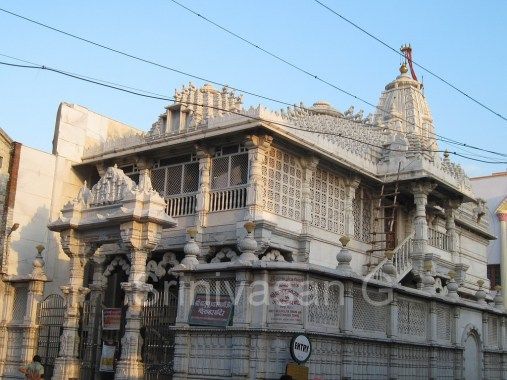
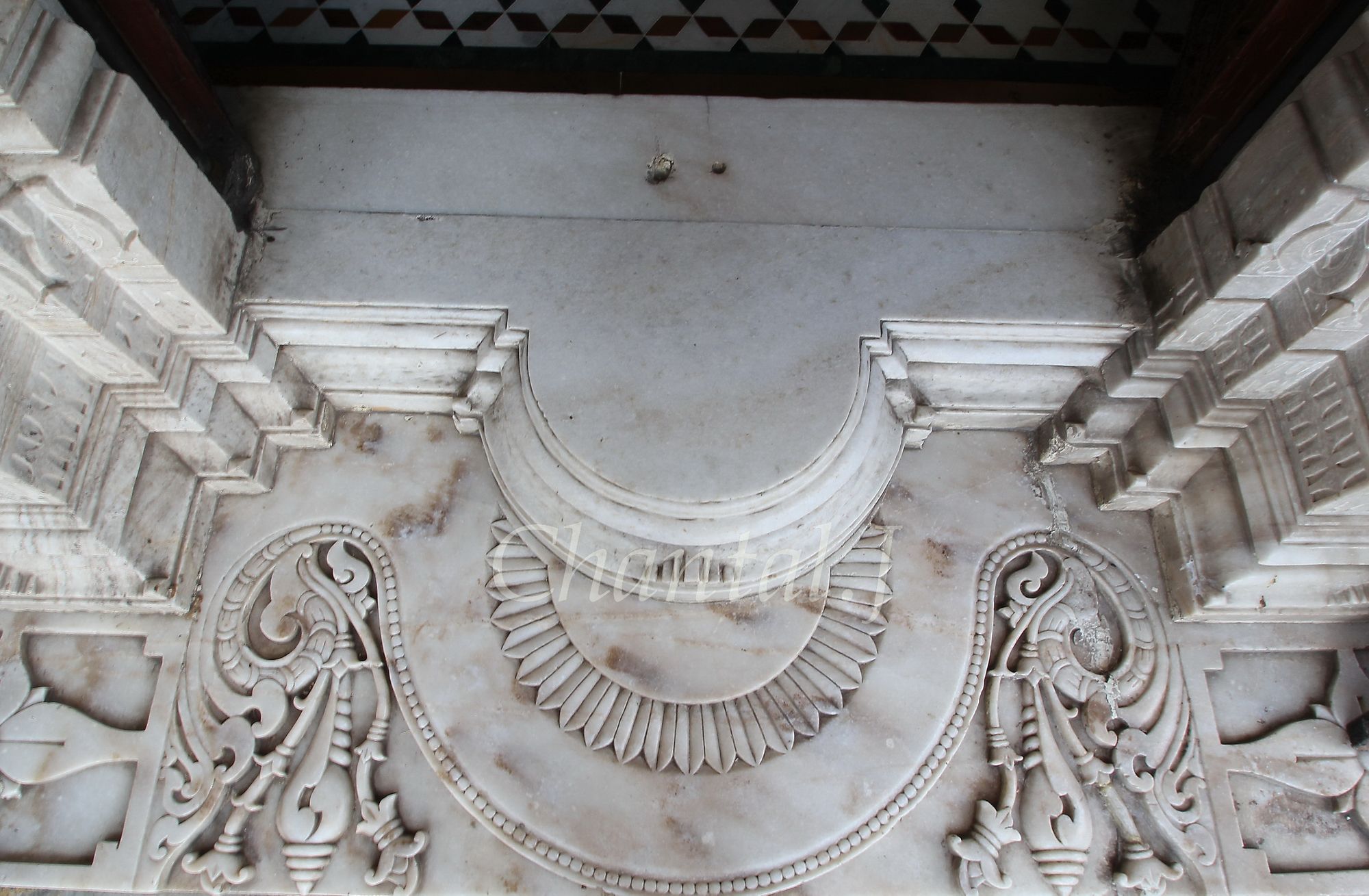

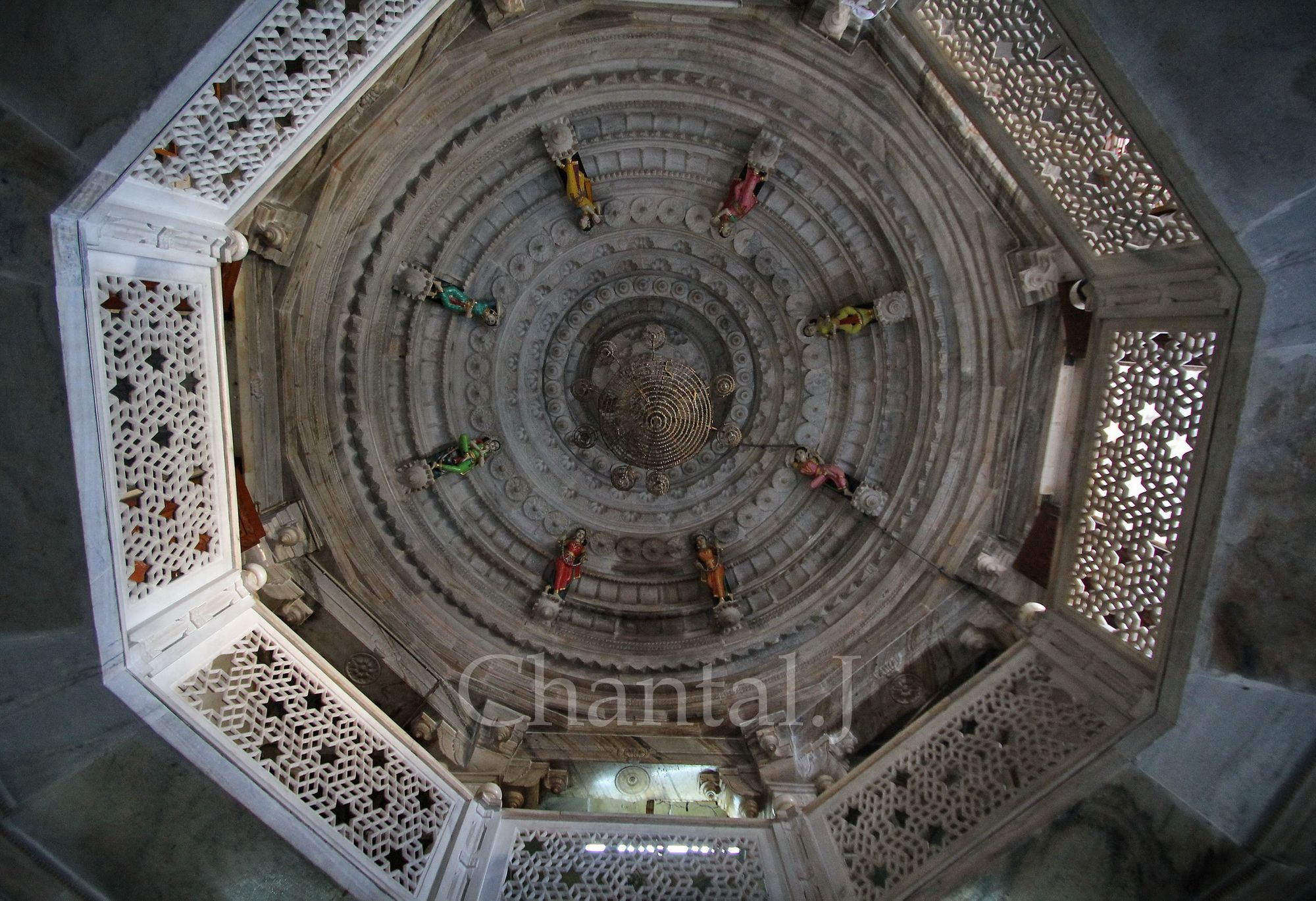
Having crossed the opalescent threshold, the milky hall reflects the morning light and welcomes men and women devotees who every day, carry out the most intriguing ritual. Sitting on the ground facing a low table, they grab from within a bag, a handful of rice grains which they display on the surface before swiftly pushing, pulling and arranging the kernels into designs with the fingertips or the side of the hand. According to Jain scriptures, every man or woman has to draw auspicious symbols with unbroken rice before starting the daily prayers.
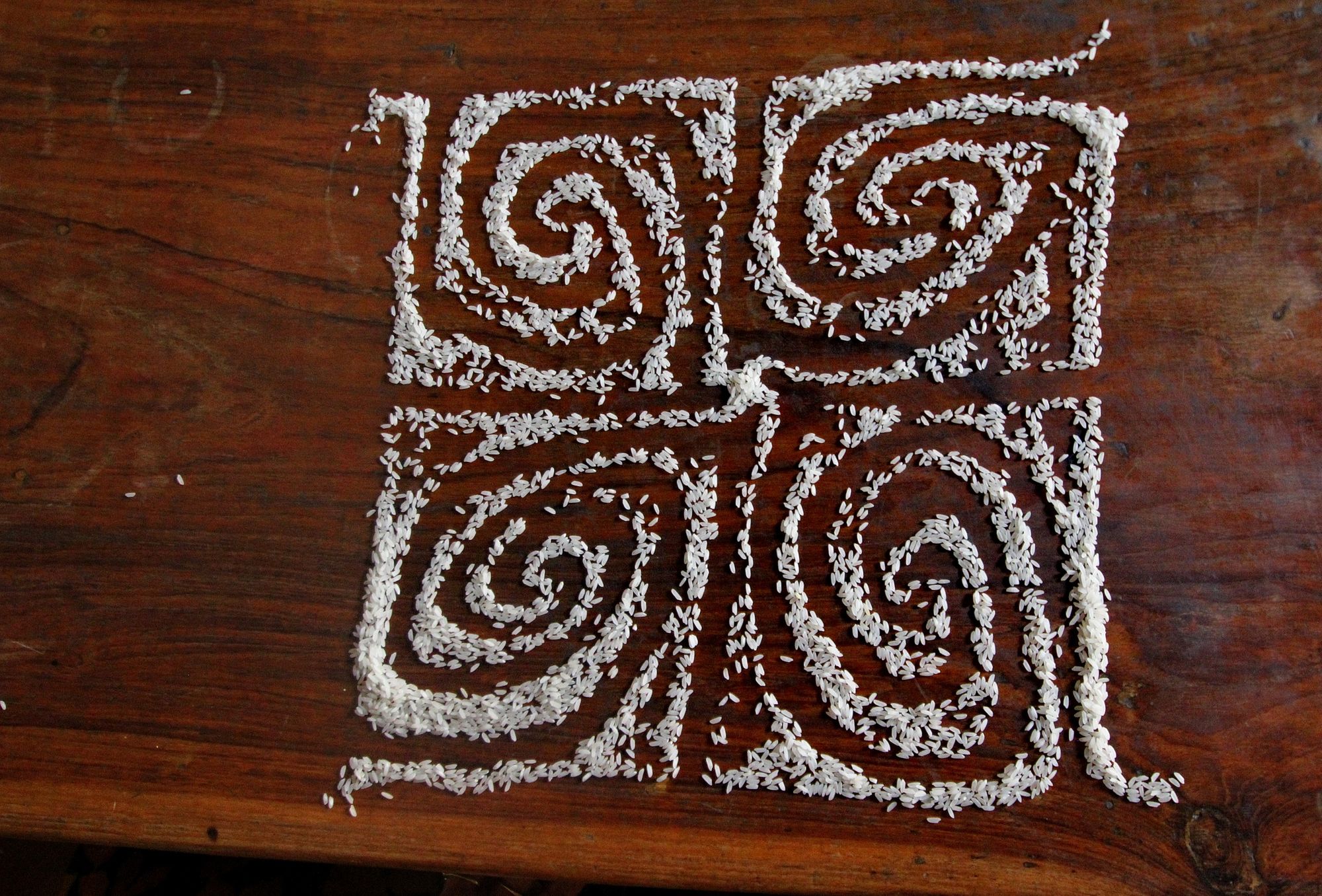
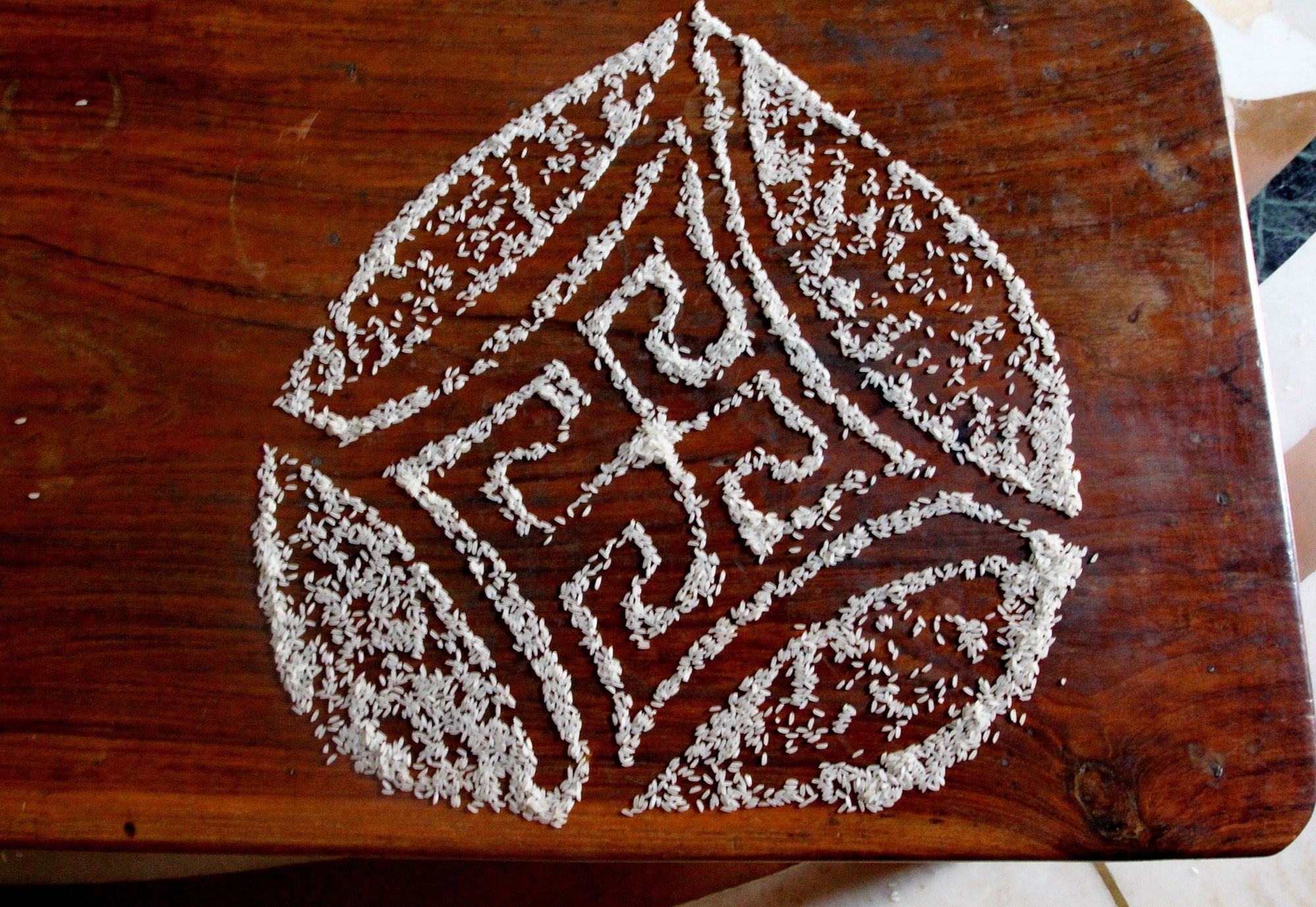

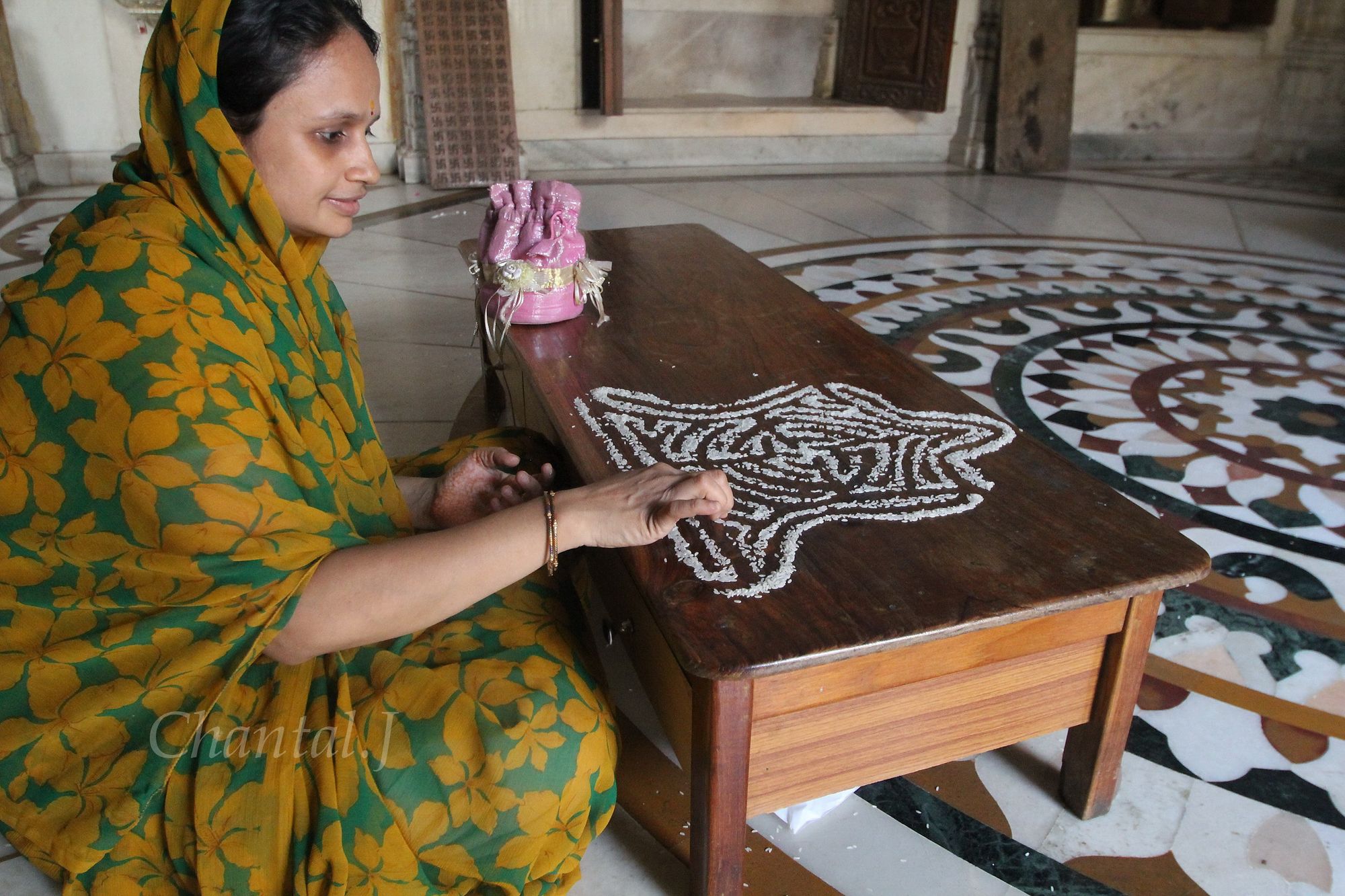
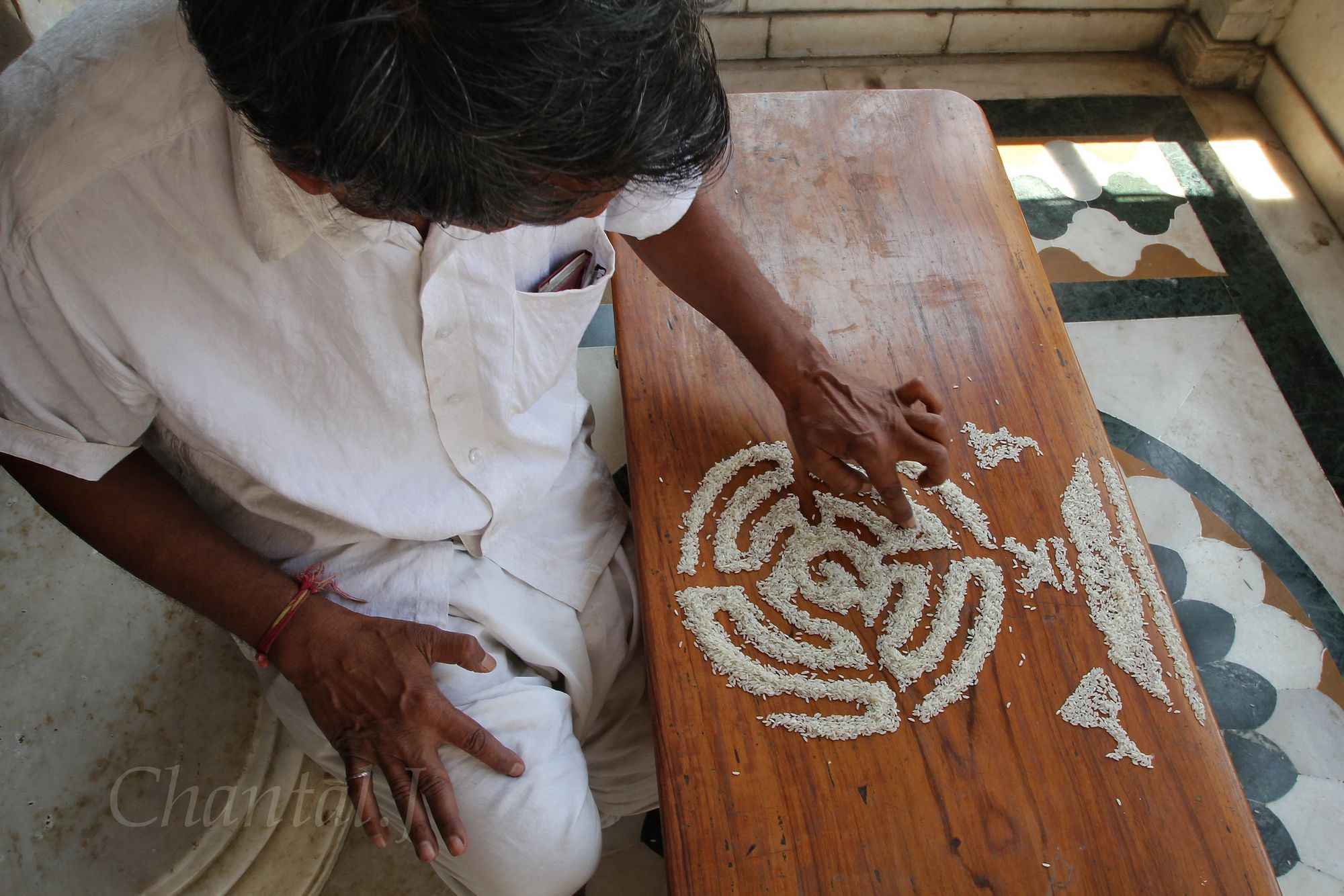
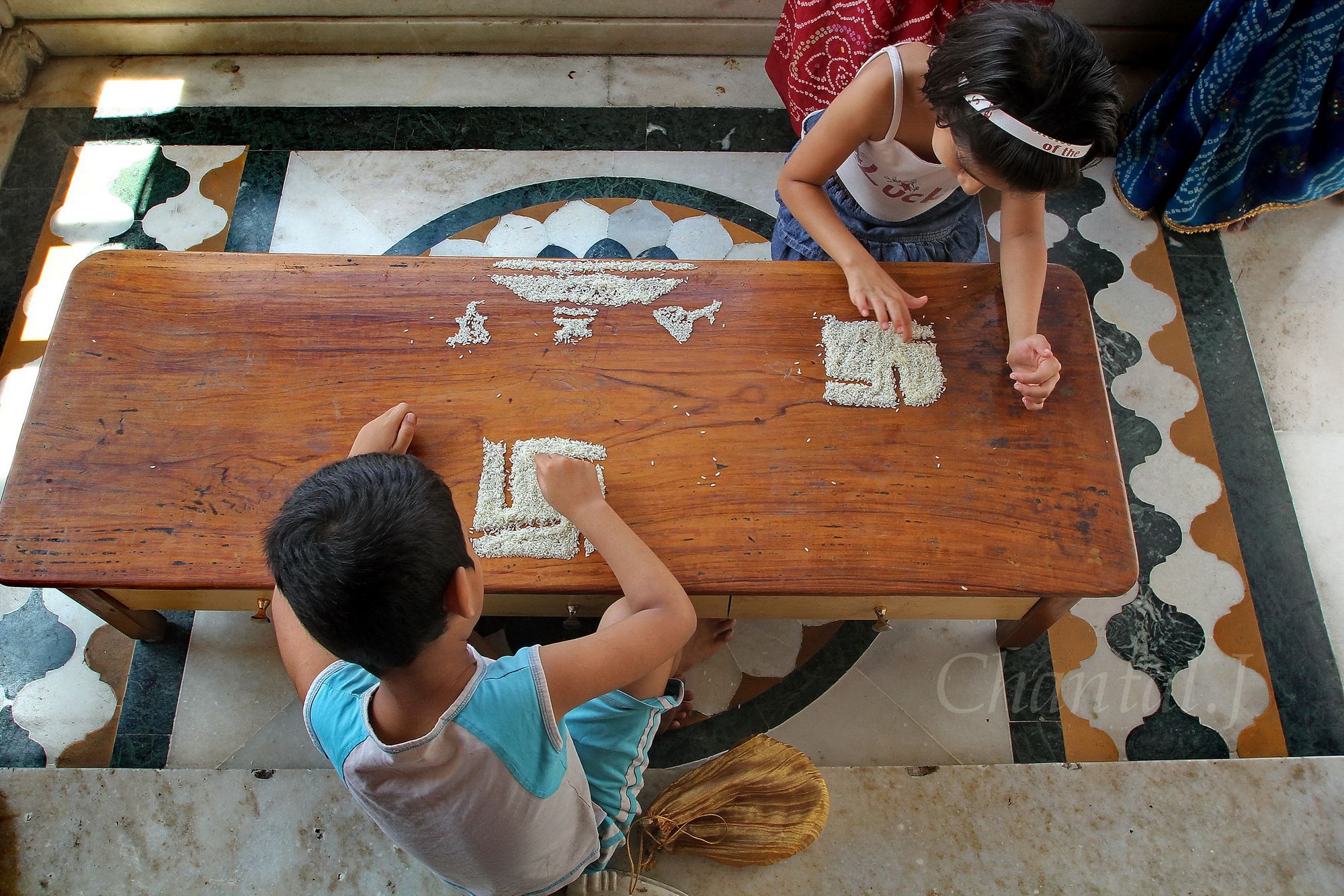
As ephemeral as a kolam, the rice design helps one to concentrate on the virtues of the Tirthankara or enlightened souls who became role-models for those seeking spiritual guidance. There are eight auspicious symbols but the most noticeable pictogram is the swastika representing the four states the soul can live in: human, animal, in heaven or in hell.

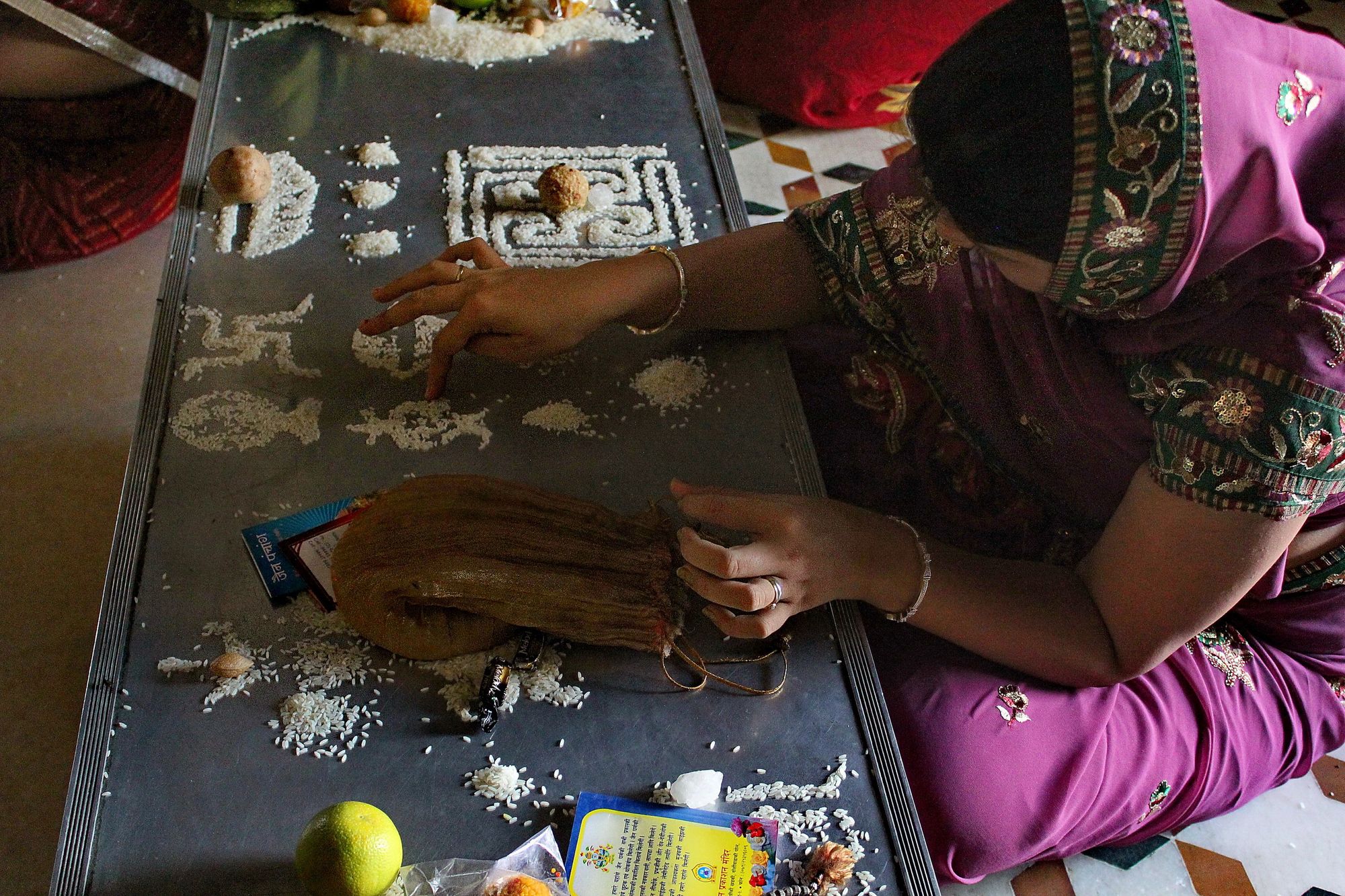
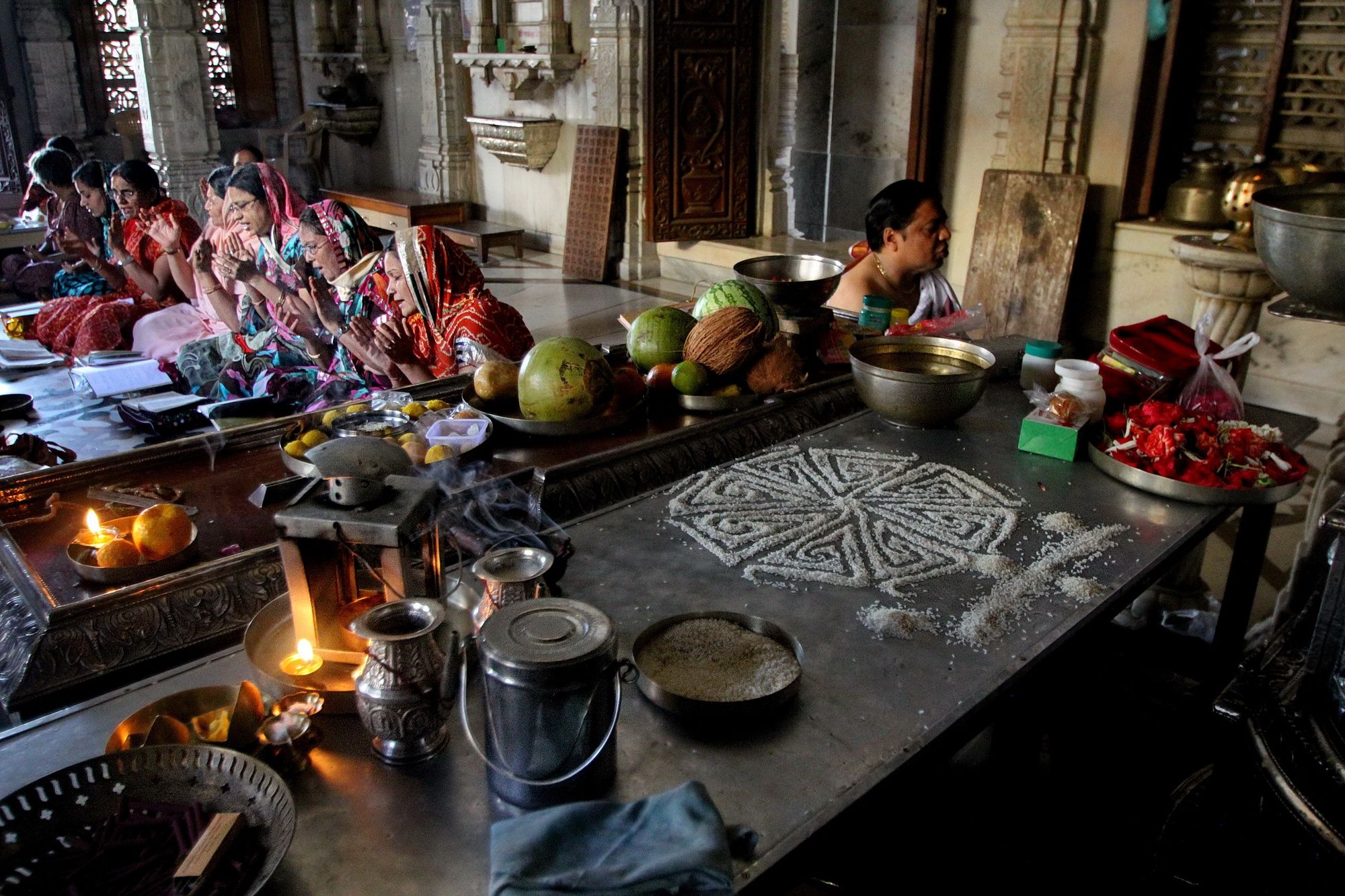
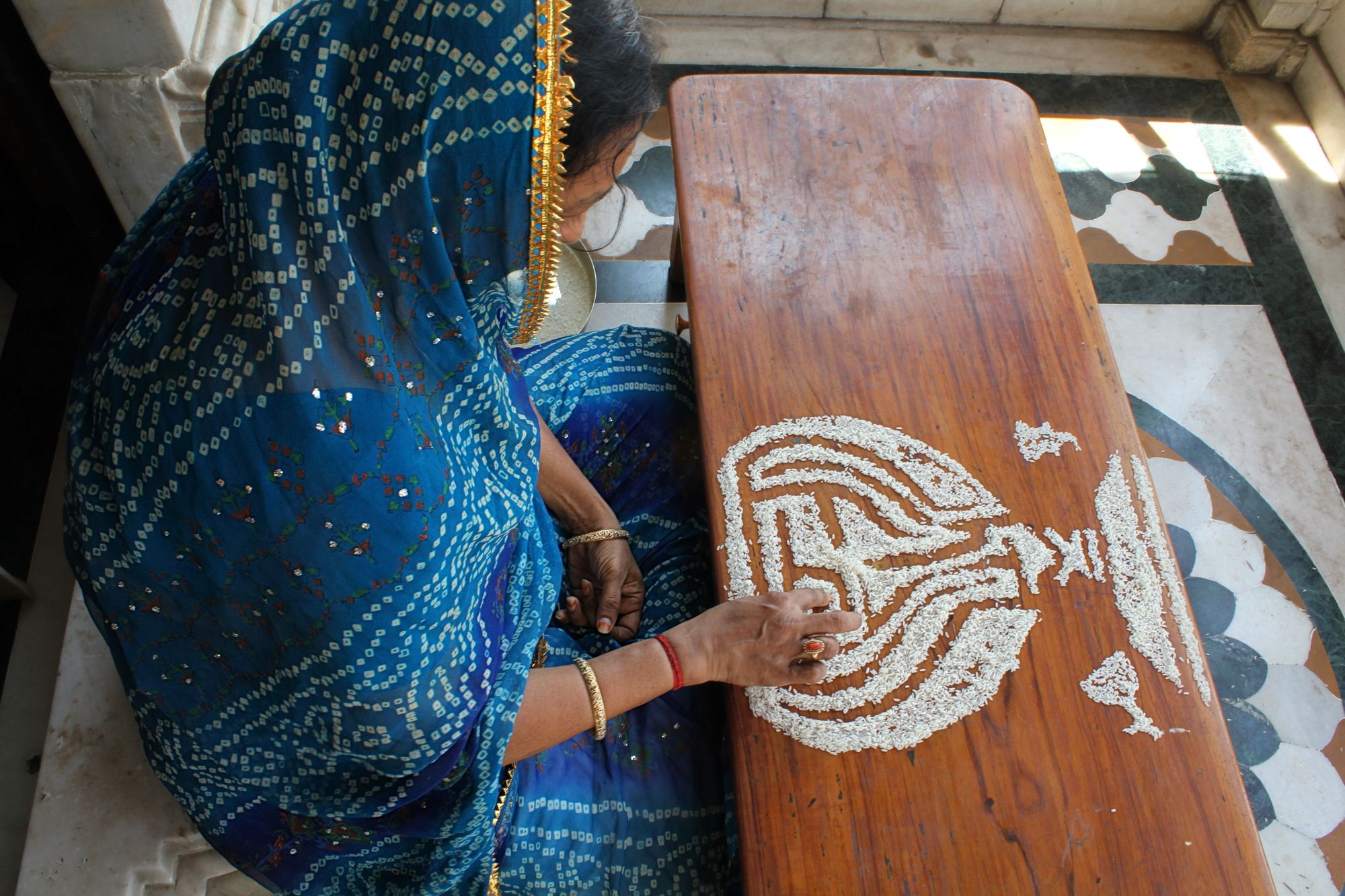
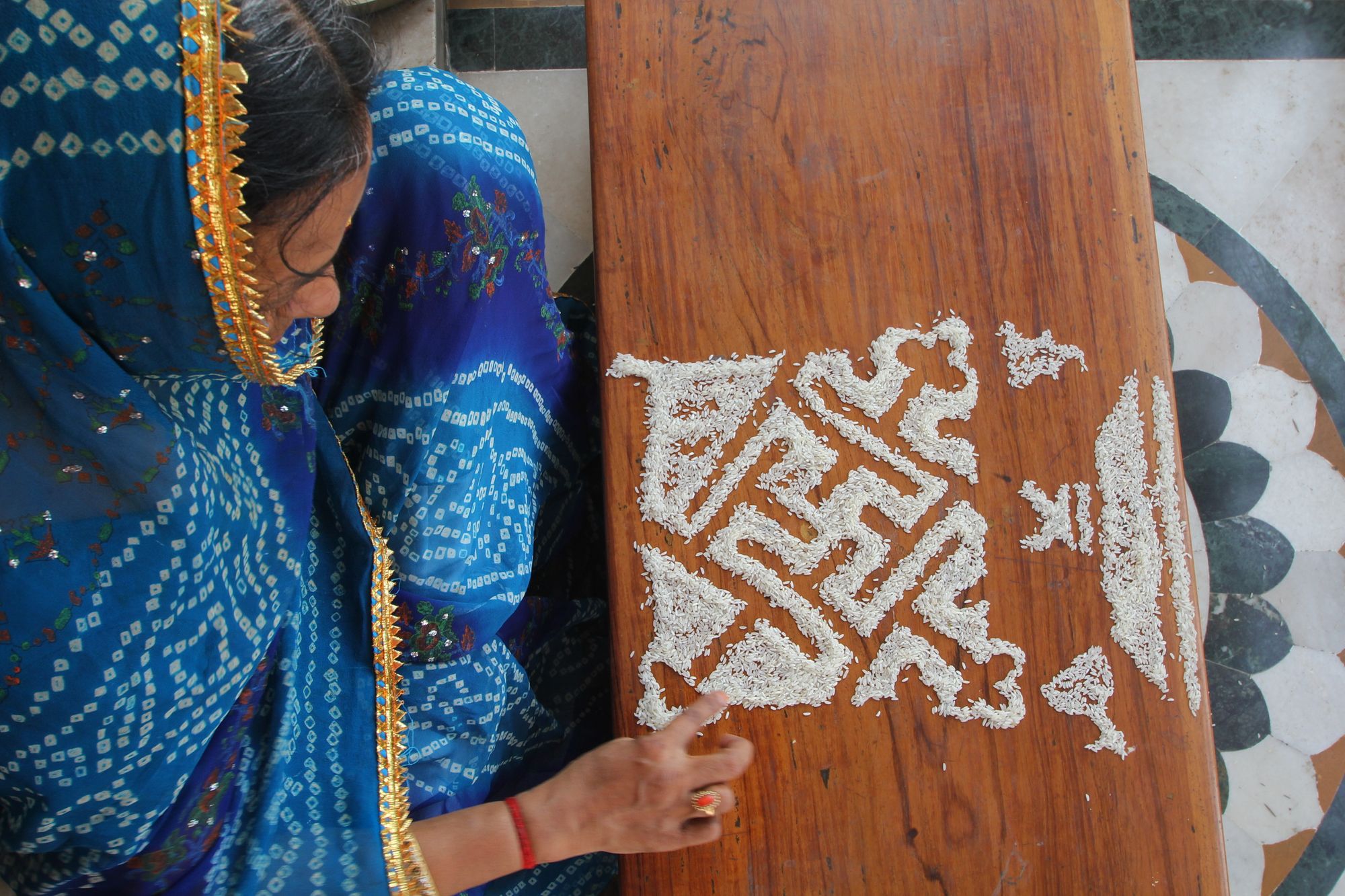
Srivatsa: a mark in the middle of the chest. Nandyavarta: a bigger svastika with nine corners. Vardhamanaka: an earthen dish covered by another one upside down, appearing like a box. This symbol is suggestive of increase of wealth and fame. Bhadrasana: a throne. Kalash: a holy jug made of copper, silver or steel. It is used for religious and social ceremonies. Minyugala: A pair of fishes symbol of Cupid’s banners coming to worship the Jina after the defeat of the God of Love. Darpan: a mirror reflecting one’s true self.
Priyanka drawing the eight symbols
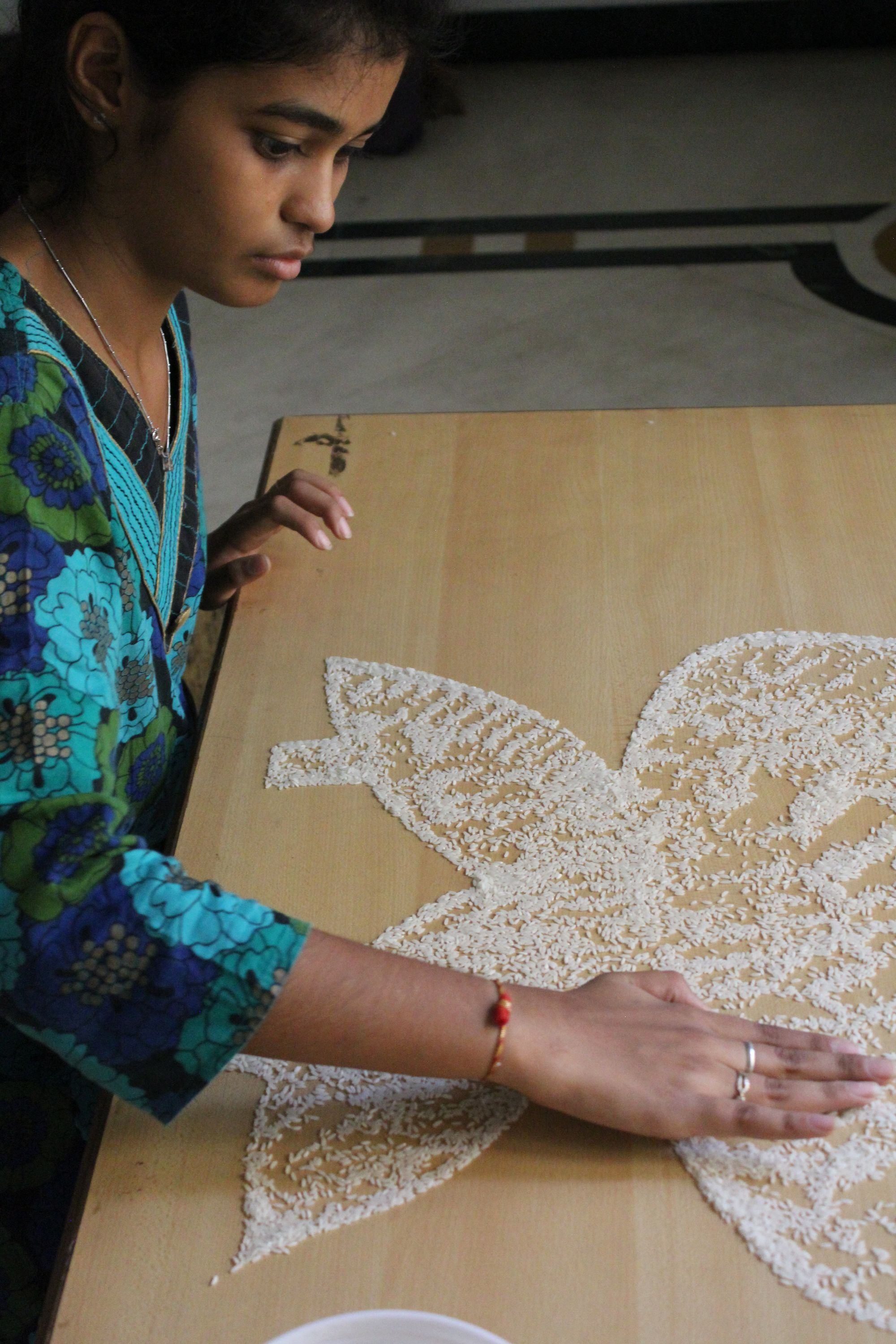

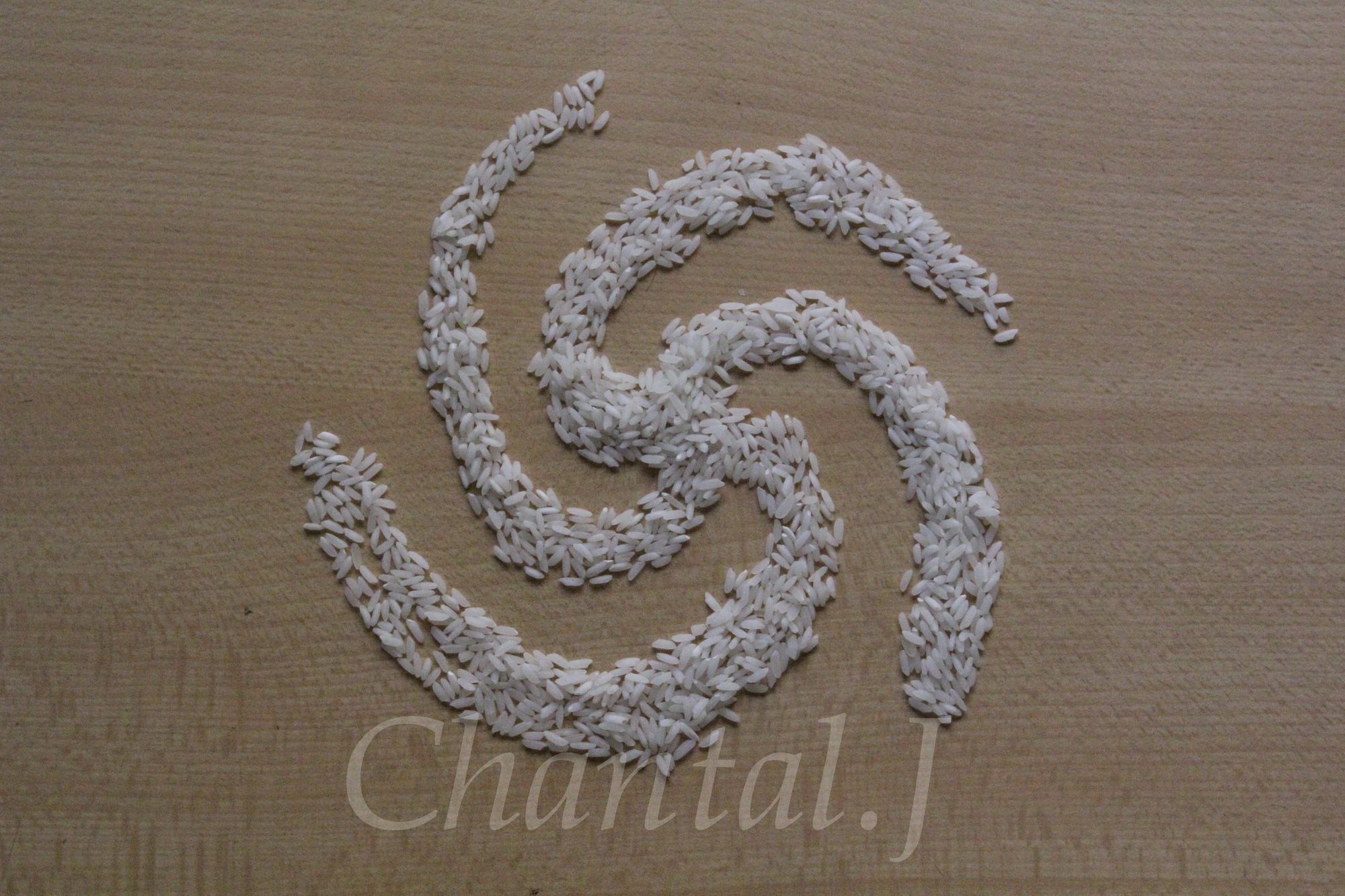
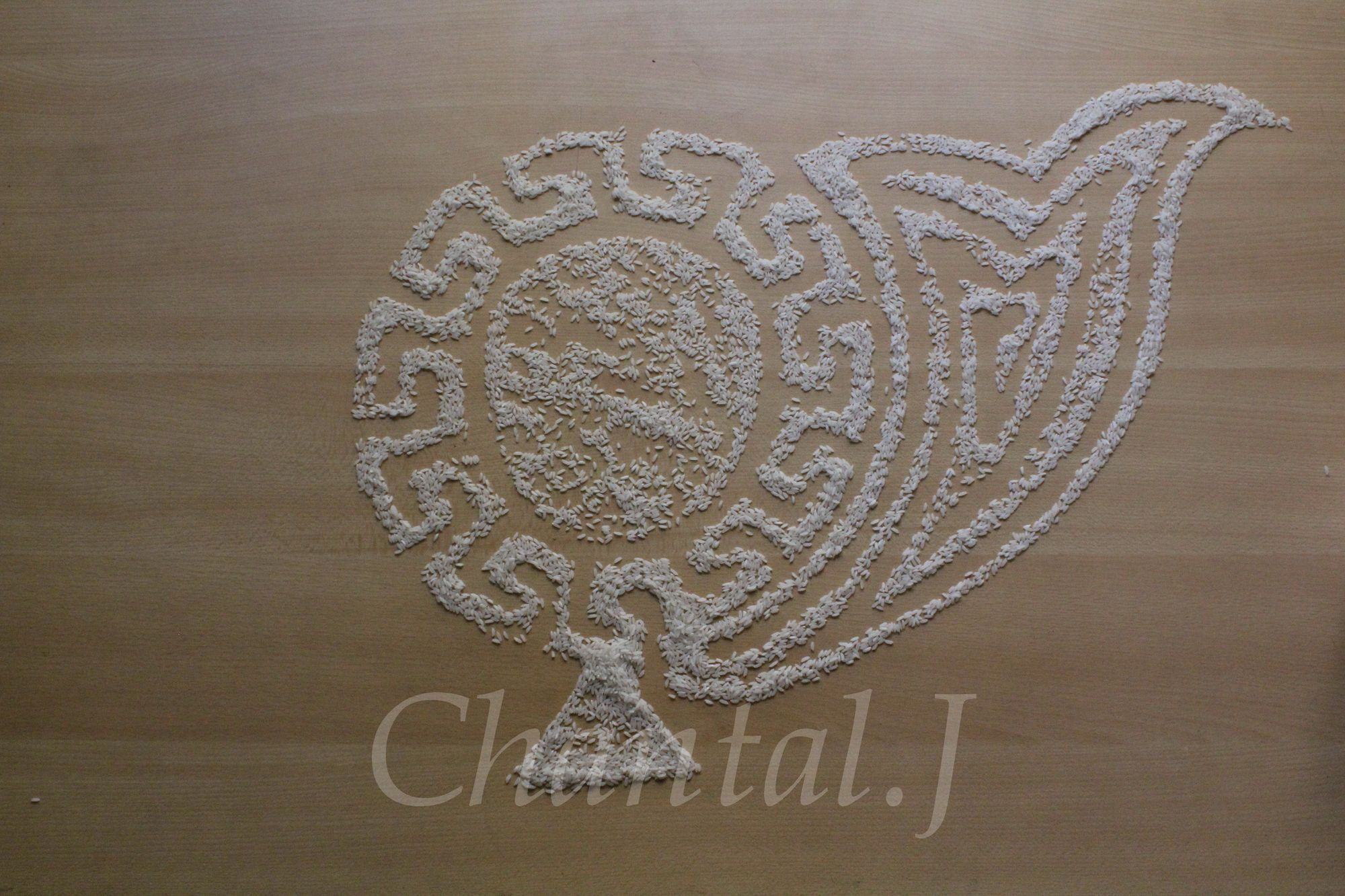
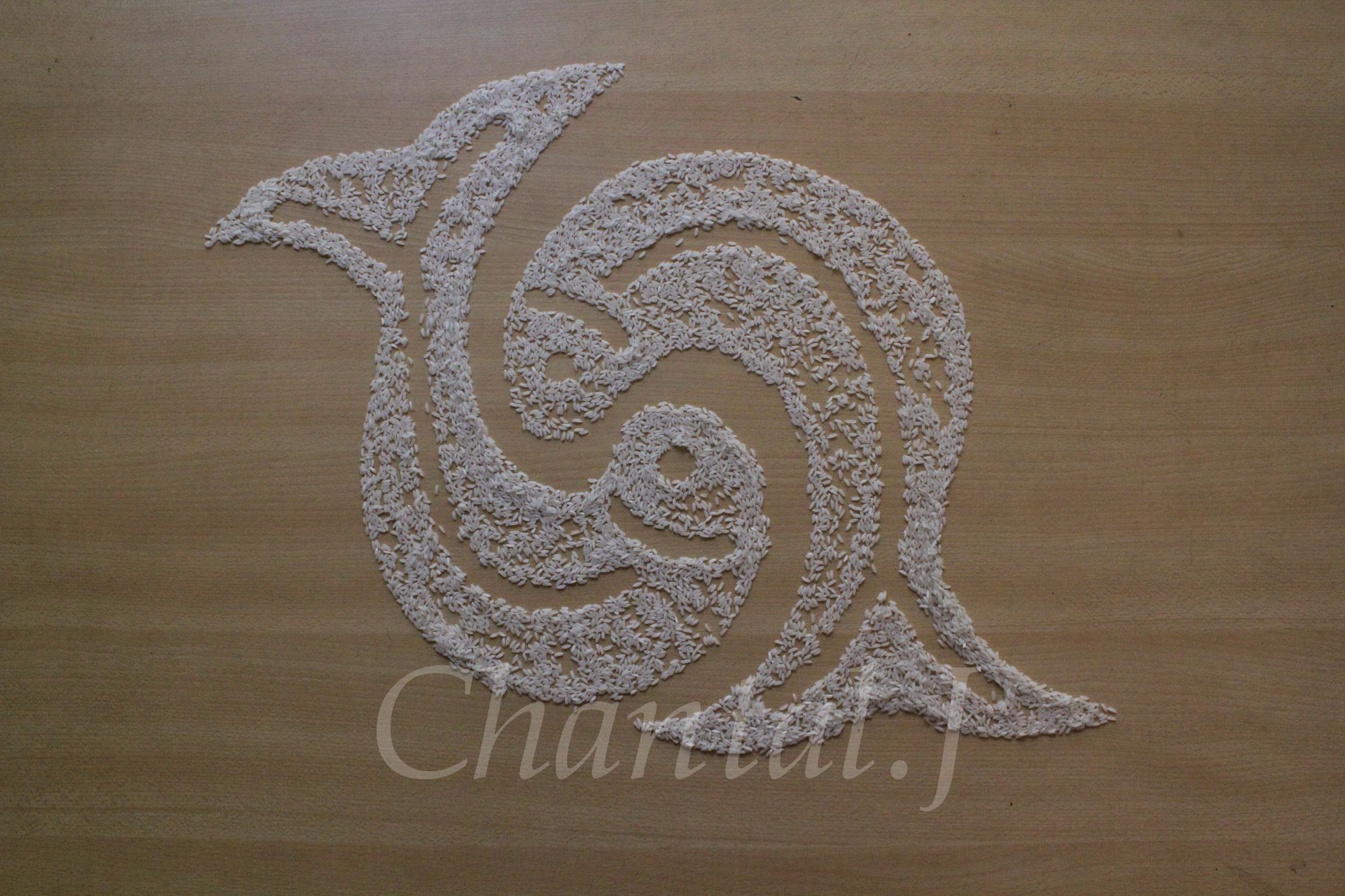

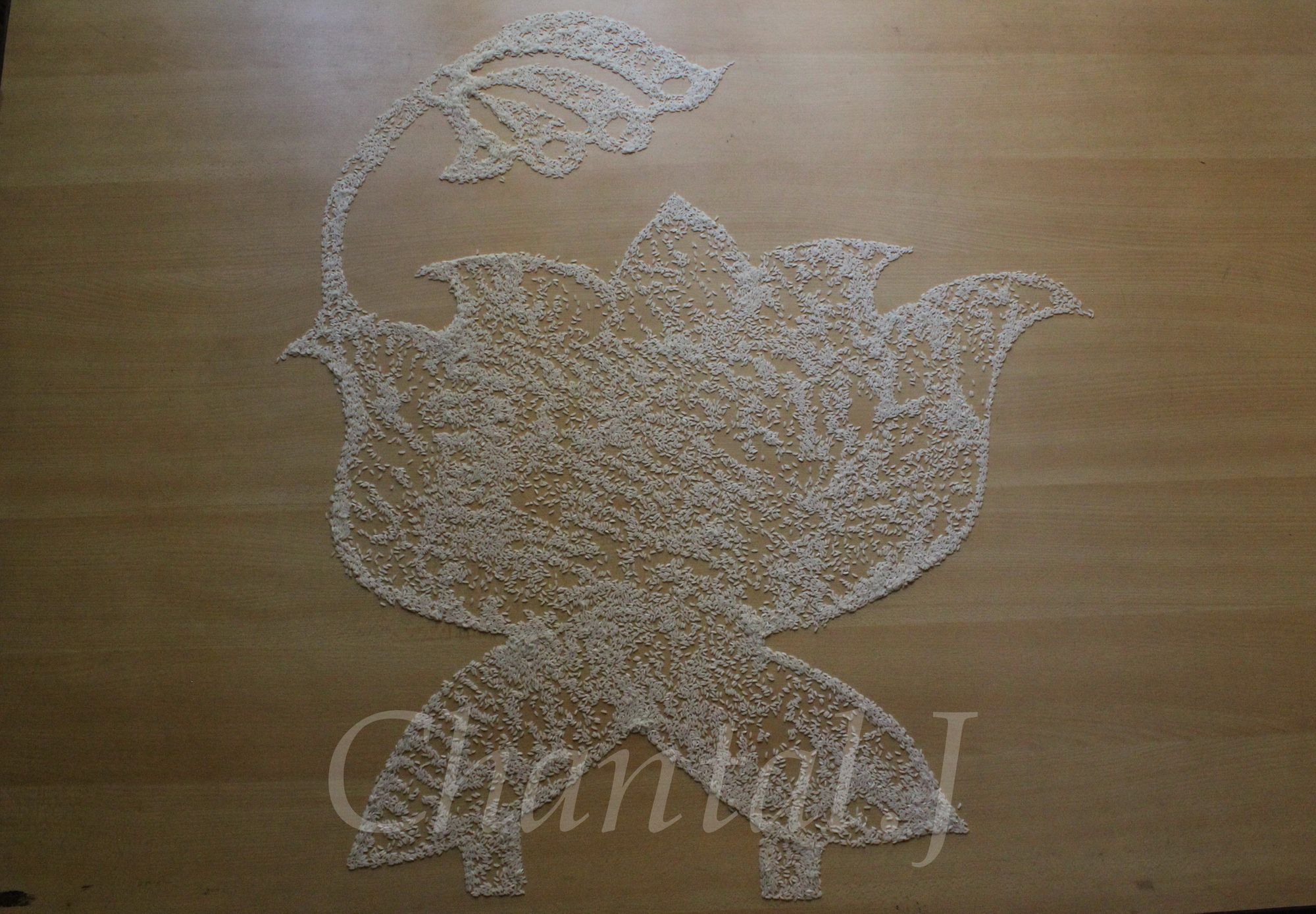
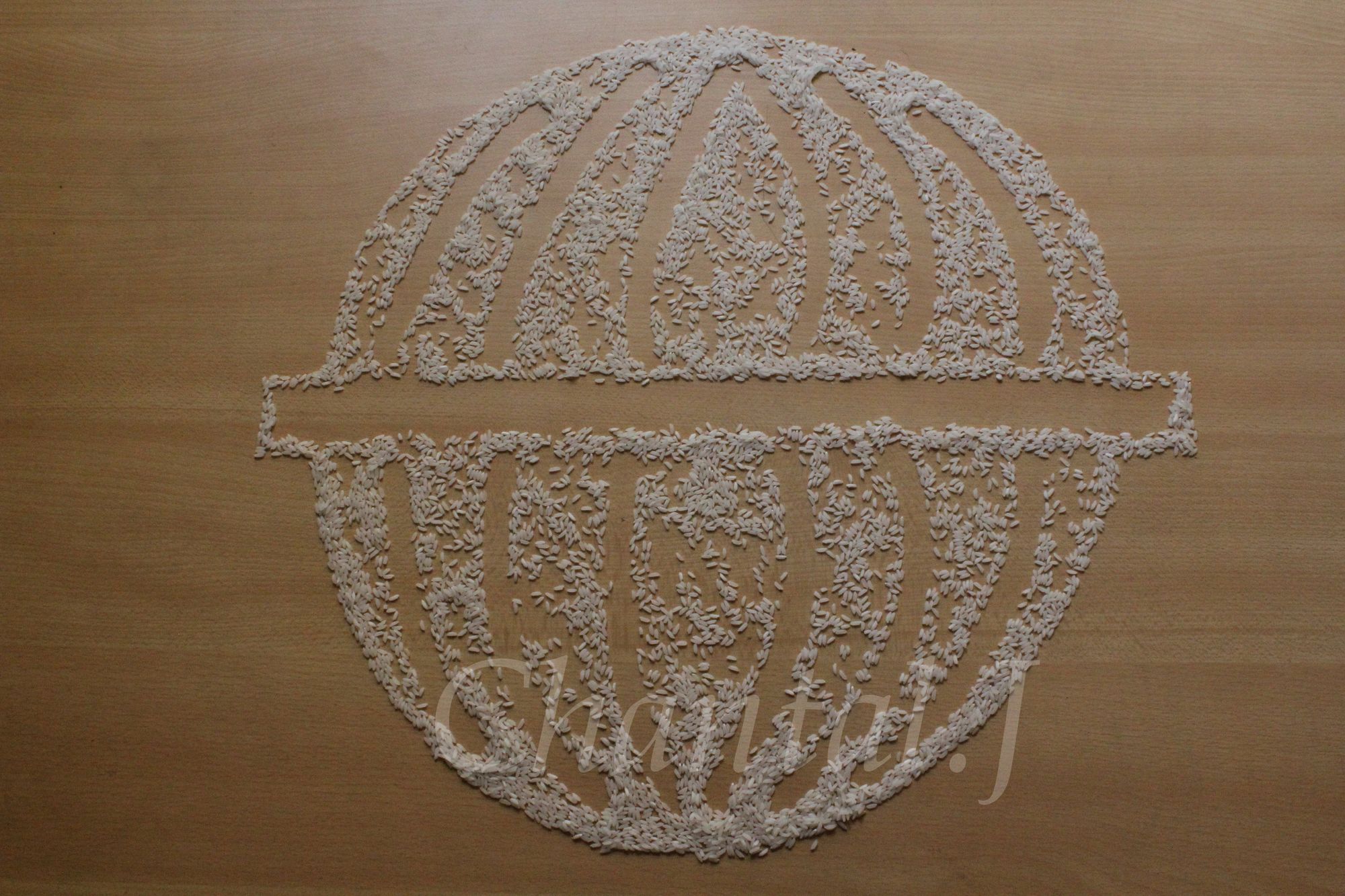

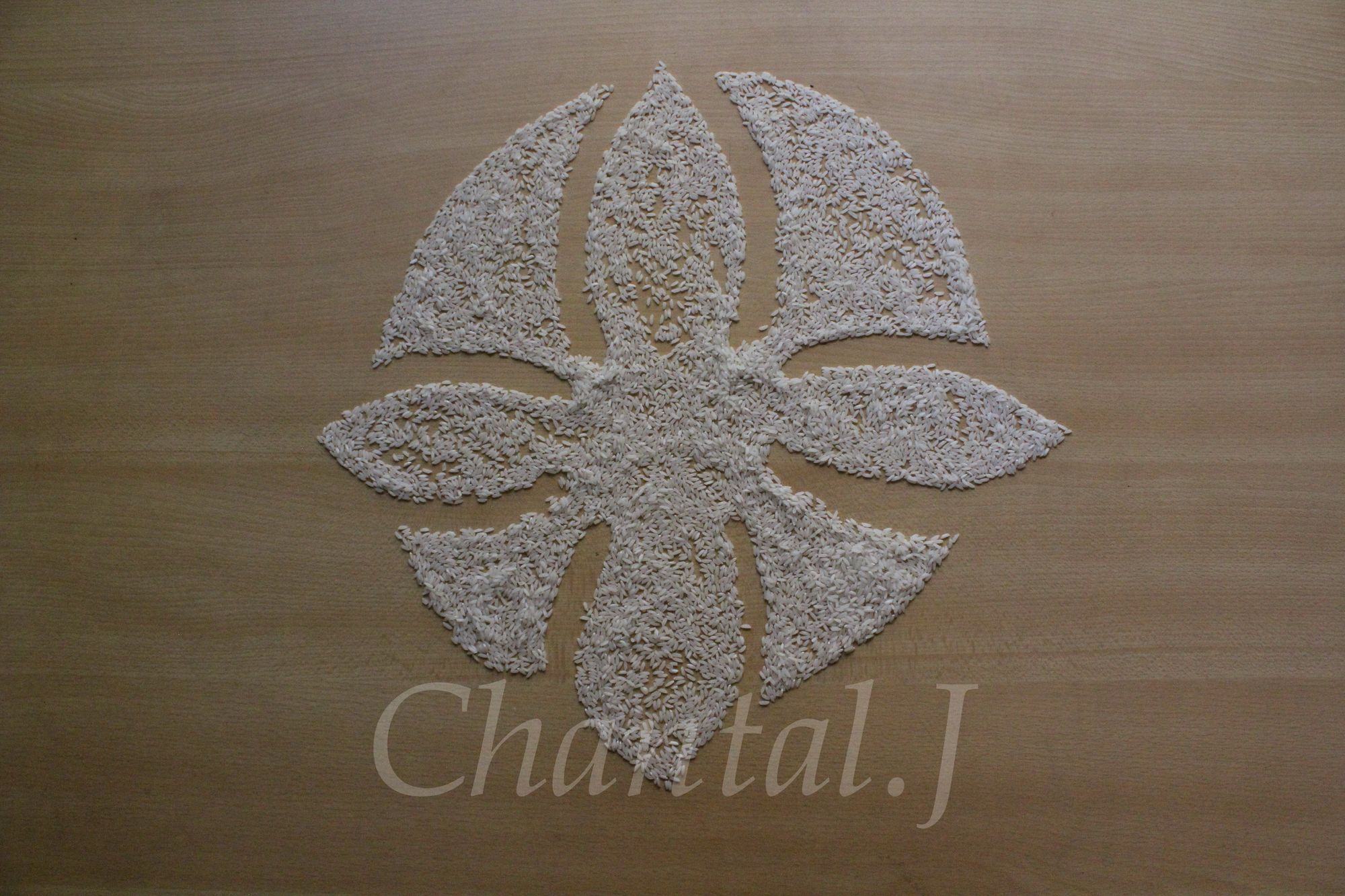
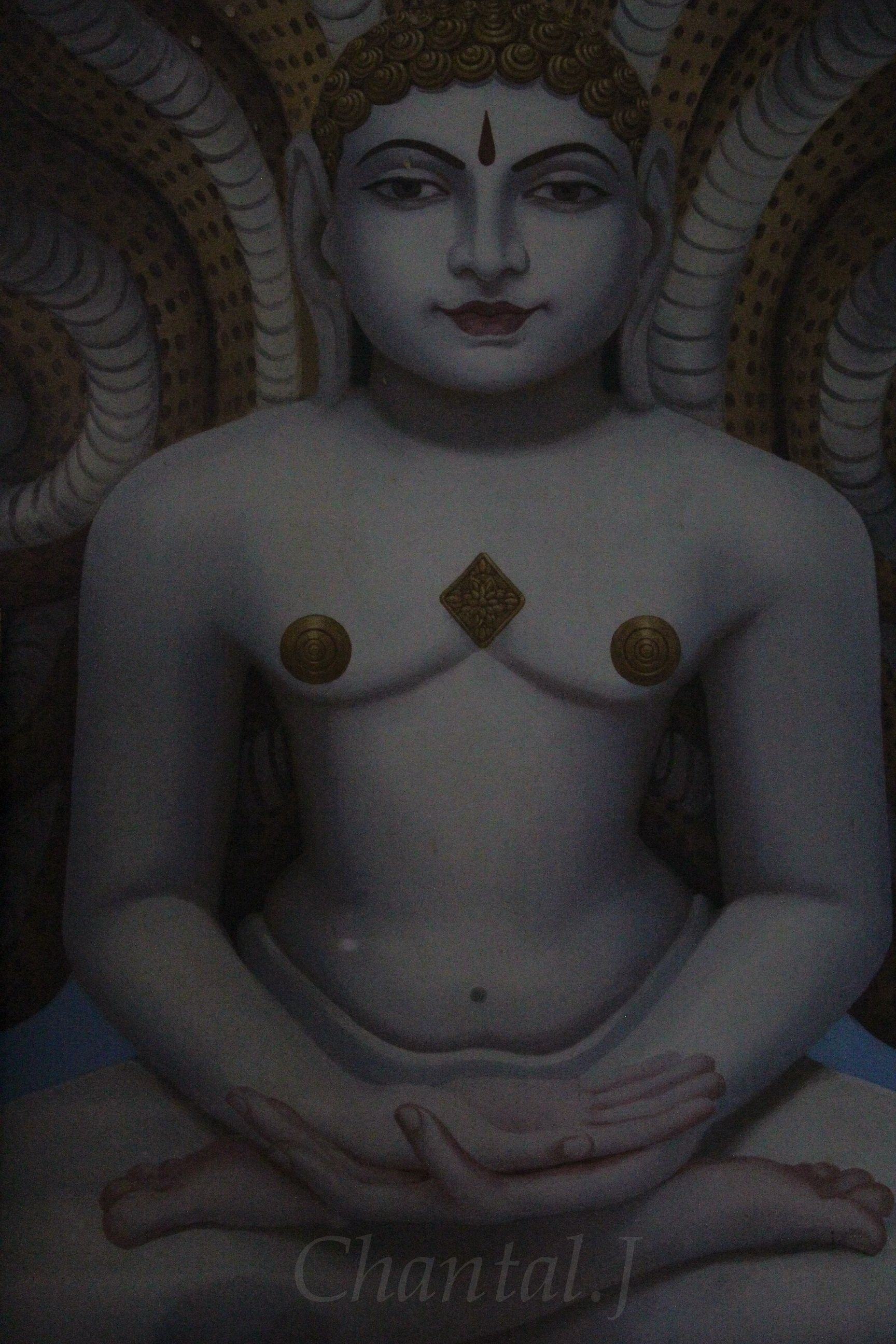

A Jain devotee arranging rice in patterns to celebrate the twelfth Tīrthaṅkara at Mylapore.
